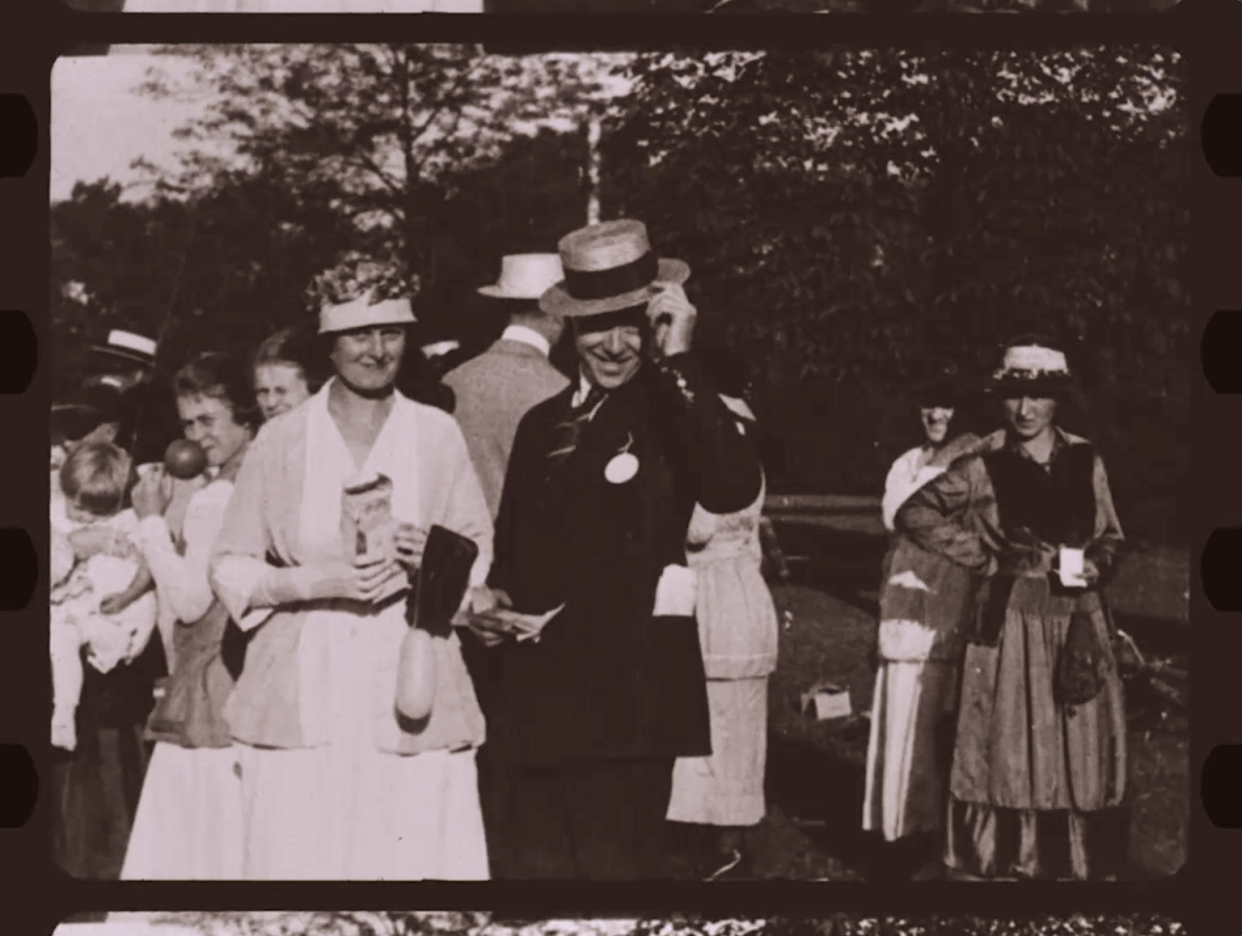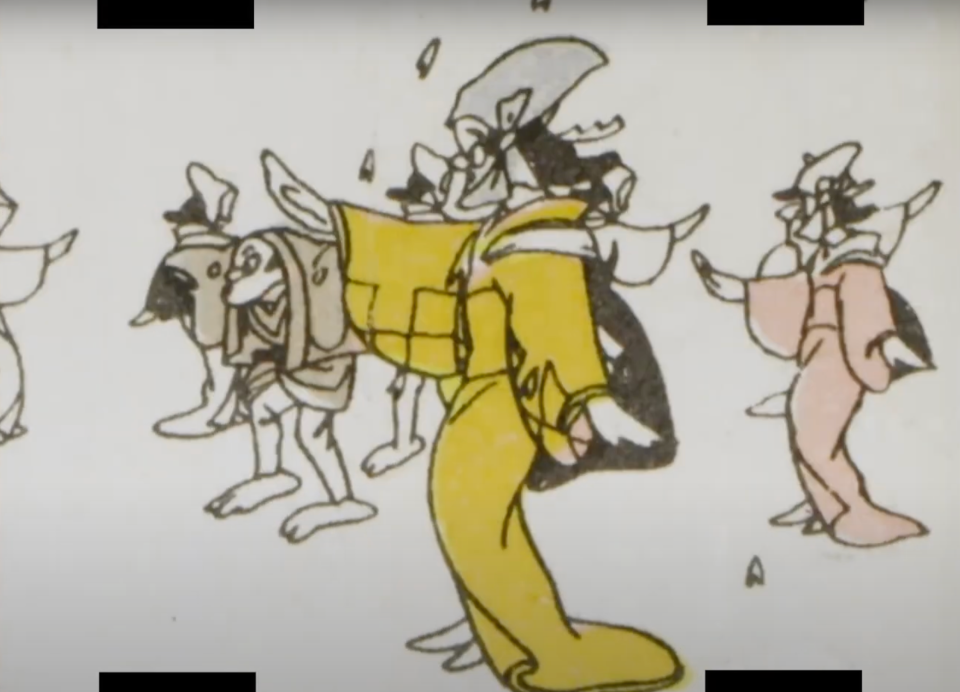This NYC Symposium Gives a Rare Spotlight to Lost Films, from Jim Henson Obscurities to Bizarre Medical Shorts

Muppeteer Jim Henson’s rarities, late quilt artist Faith Ringgold’s earliest interview, and an ad for Jacuzzi rival Vibrabath saw the light of day at the 14th Orphan Film Symposium.
Celebrating its 25th anniversary earlier this week, the NYU-produced Orphans (first founded by University of South Carolina turned NYU professor Dan Streible in 1999) gathered scholars, archivists, and preservationists for a range of media obscurities: including home videos, newsreels, and medical films abandoned by their copyright holders at the Museum of the Moving Image (MoMI). Blame low commercial value, the deterioration of VHS/celluloid copies in the DCP era, or the shrouding of sociopolitical messages from the masses for their loss.
More from IndieWire
Ethan and Maya Hawke Almost Abandoned 'Wildcat' After Discovering Flannery O'Connor's Racist Letters
This year’s theme was the broadly named “Work and Play.” According to the convening’s open call, “Work” alludes to labor, occupations, and machines. Conversely, “Play” implies joy, games, entertainment, and sex. Yet, the two realms intersect when it comes to artists and athletes a la Soviet ballet dancer Yuri Soloviev’s 8mm movies (preserved by his family’s archive), historically excluded communities like a baseball league using the sport to assimilate Filipinos in Chicago in Nicholas Viernes’ silent “All-Stars” (1939; preserved by the Filipino American Historical Society of Chicago), and compound-worded professions like sex work as seen in the comedy “One in Seven, or True Confessions of a Gay Fleshpounder” (1988; preserved by the UCLA Film & Television Archive’s Outfest Legacy Project and held in its ONE Archive’s Collection).
John Canalli’s 15-minute fictional diary film “One in Seven” follows massage therapist John’s (a dazzling Canalli) preparation of his male clients in San Francisco. While displaying his work ethic and hilariously descriptive newspaper ads, he boasts of prioritizing a suitor’s physique over his qualifications. In a pre-recorded interview, his sister Chris mentions that it was important for Canalli during the AIDS epidemic that “men needed to be able to have a place to go to feel pleasure and sensual touch.” Though the short was released just before the New Queer Cinema hustler classic, “My Own Private Idaho” (1991), the overemphasis on the supporting actors’ unnatural line deliveries to John’s sexual advances and its home video aesthetics are possible reasons why it fell into the abyss. However, with Canalli’s transgressive and merry approach to sexuality, “One in Seven” is a blunt, cackling search for longing during this current wave of anti-LGBTQ legislation.
The gathering had abundant medical films across the U.S., the U.K., and Germany as they subverted the educational expectations of the subgenre. Some are horror with accident films from Charité – Universitätsmedizin Berlin’s archive and “Our Children” (1919/21; preserved by the Eye Film Museum) bringing flinching insight into the white dominance of nurturing children during the Eugenics movement in Alabama. Britain’s Wellcome Collection featured instructional, dramatic, and comedic health hypotheticals. Defunct manufacturer Imperial Chemical Industries was among the biggest producers in this niche market. Given its unethical misinformation over the subject matter, it’s crucial to note that the patients shot by their film unit were played by crew members (not actors). Their most scintillating short “Marrow Puncture” (1953) characterizes a deliberately harmful eponymous procedure that amused many at the Symposium.
Other heavy laborious content included an acute gender study of factory workers in the uncredited “Une visite à l’usine Citrëon” (1914-25; preserved by the GP Archives); United Electrical, Radio and Machine Workers of America’s (U.E.) demand to free their president William Sentner after he was arrested for the Communist-targeted Smith and McCarran Acts in the Union Films-produced “The Sentner Story” (1953; preserved by NYU LIbraries’ Special Collection and in its Carl Aldo Marzani Films collection); and haunting land/mineral extraction films in Canada, Mexico, and Mauritania that diminished their scientific value by not recording the data over its “discoveries” and erasing BIPOC communities.
Sprightly highlights included exuberant 1965 skateboarding videos that delve into Bay Area teenagers lifting porta potties and skateboarding on the highway while holding a rope tied to a car. Plus, NYC kids rode a makeshift scooter and used arge cylinders as telescopes in director Patricia Jaffe’s oneiric “My Own Yard to Play In” (1959; restored by York University’s Archives). Then, “Funny Pages” bit-actor Shane Fleming presented cheap music videos from the disastrous, short-lived home talkie device De Vry Cine-Tone’s catalog, where performers lip-sync to songs with ill-advised production choices, like four college-aged roommates having older voices in “Doin’ the Racoon” (1928).
While physical media is on the verge of extinction, Orphans reminds us of cinema’s tactile origins and embellishes the forgotten, as in the perfectly titled “Japanese Paper Films.” In the 1930s, producers REFCY, Katei Toki, and the Tsukiboshi Company made movies containing crayon drawings (like a person having a sadly short friendship with a “Racoon Dog Balloon”) or live-action photos (such as a 47 Ronin-ish chanbara) printed on paper that was then displayed via an opaque projector, in front of its lightbulb. Some had a soundtrack, while Yoko Reikano Kimura played live Koko music in the silent entries at MoMI. However, they later became unviewable as these projectors weren’t working, and the prints had glued frames (unlike stitched celluloid prints), uneven frame height, and inconsistent perforations.
Past Toy Film Museum researcher Eric Faden took the collection’s inaccessibility to heart when the museum’s curator, Yoneo Ota, asked him, “If only someone could come up with some way to scan these?” in 2017. At his current post at Bucknell University, Faden collaborated with his students and fellow faculty, where they custom-built the scanner Kyōrinrin (named after a Japanese spirit that protects lost scrolls) to scan the delicate materials and fix their issues successfully; the paper films transformed from intuition to fact. They evoke Sam Spade’s iconic “The Maltese Falcon” quote — “The stuff that dreams are made of.”

The label Orphan also complicatedly extends to video games, as 87% of pre-2010 games are missing due to developers leaving older gaming consoles behind. That’s not unlike how many American silent films are missing. One of the most significant phenomena is the PS1 cult classic “LSD: Dream Emulator” (1998), an experiential meditation on living life within its universe with dated animations as if VR didn’t exist. Many wouldn’t necessarily call this Japanese exclusive “a game,” but its creator, digital artist Osamu Sato, did. University of Halle professor Patrick Vonderau and research assistant Sarah Bashir conducted an interview with Sato for this presentation, and he said it’s “a game that allows them to experience an absurd dream for a little while without ‘Game Over.’” Though Sato has the copyrights for “LSD,” the first four PlayStation models are discontinued. Sato had expressed interest in expanding it beyond Japan, but it was never translated. Vonderau and Bashir magnificently ended their findings by bringing the game’s requisites and offering the crowd to play “LSD” before technical difficulties prevented its U.S. premiere. Only time will tell if it will be available in the region.
Barbara Miller, MoMI’s deputy director for curatorial affairs, shared a little-known MoMI tidbit in her remarks. Before MoMI opened in the former Astoria Studios in 1988, the U.S. Army used the building as a training ground and military film studio from 1942-1970, where they frequently hired union professionals. Once they departed, the U.S. General Services Administration acquired the complex and “left it to deteriorate and vandalize.” With efforts from IATSE members, local politicians, and real estate developer George Kaufman, they were able to make most of the lot of today’s Kaufman Astoria Studios in 1980 (opened in 1982), with MoMI acquiring the remaining building and IATSE’s collection.
In a moment apropos of the spirit of the Orphan Symposium, Miller also said that MoMI tends to reject the term “movie magic.” While acknowledging movies have “magical properties,” Miller says that MoMI views filmmaking as “a form of labor.”
Best of IndieWire
The 10 Best Teen Rebellion Films: 'Pump Up the Volume,' 'Heathers,' and More
The 28 Best True Crime Shows Streaming Now, from 'Under the Bridge' to 'The Vow'
The 10 Best Doppelganger Films, from 'Dead Ringers' to 'Vertigo'
Sign up for Indiewire's Newsletter. For the latest news, follow us on Facebook, Twitter, and Instagram.

